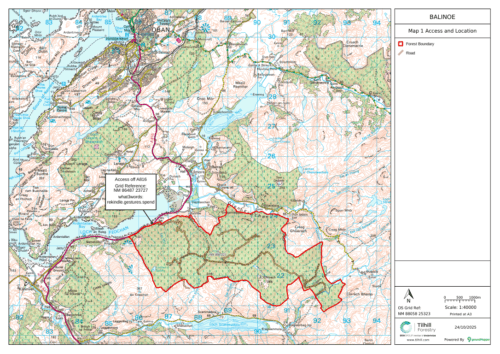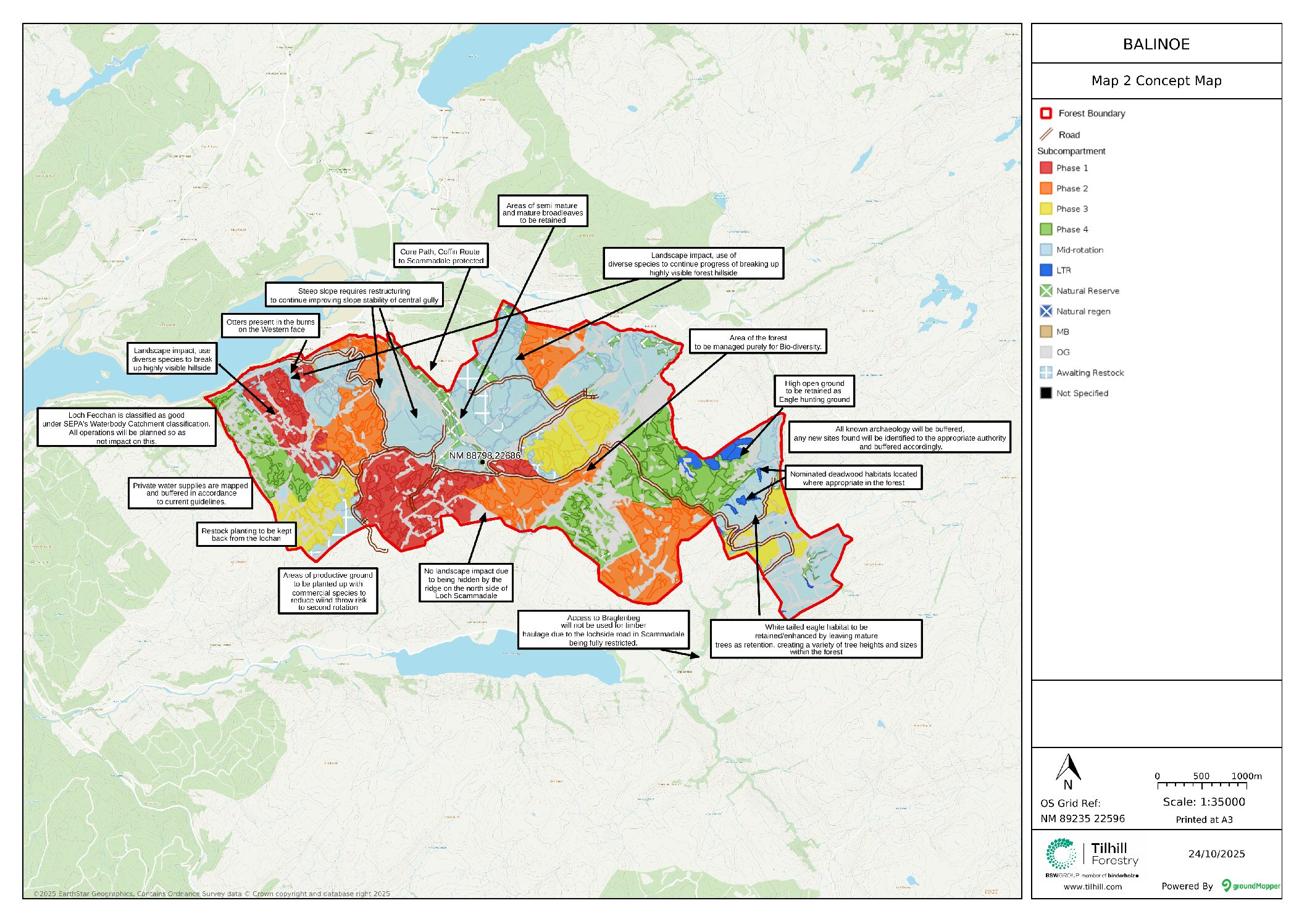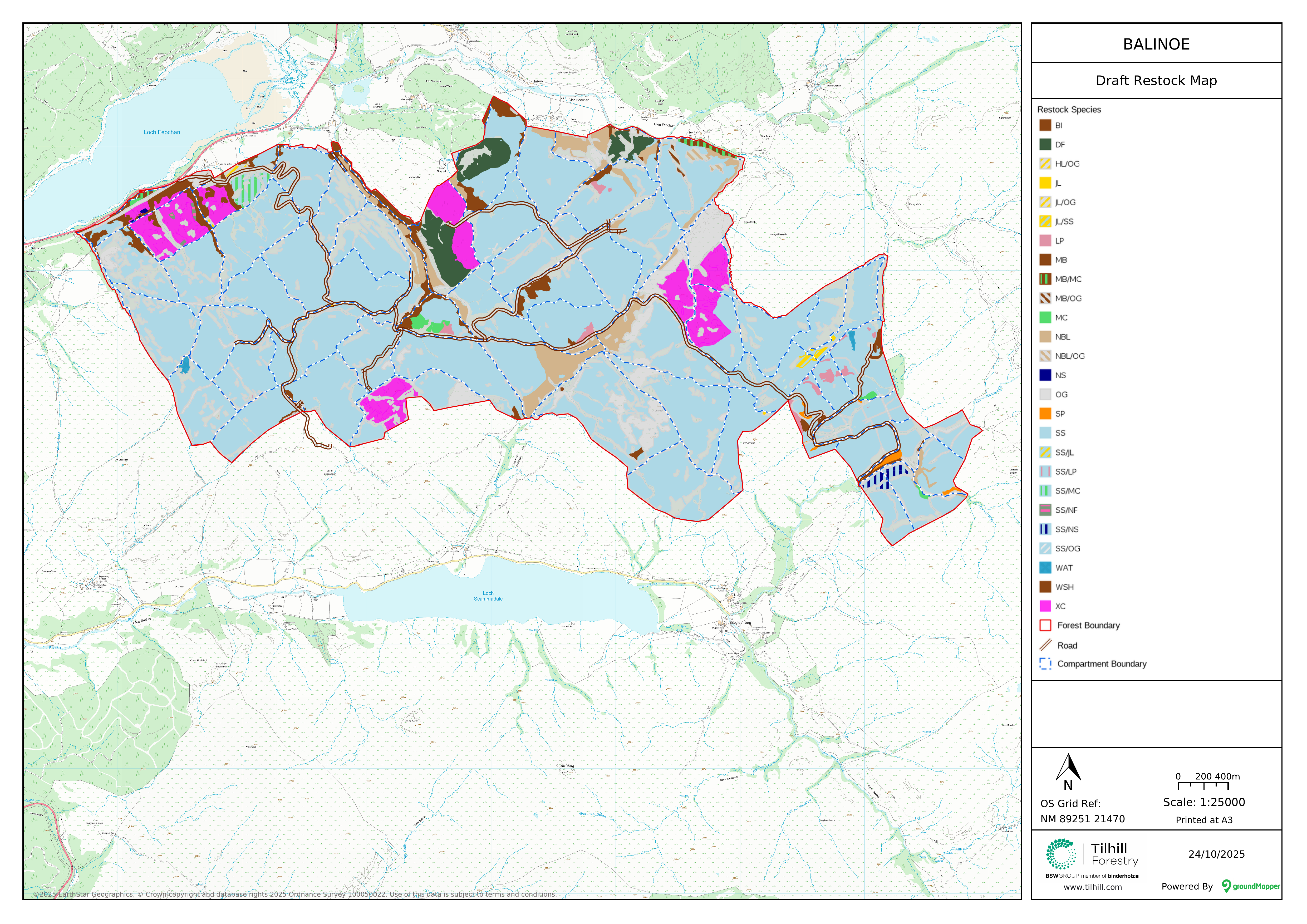We want to hear from you
We want to hear from you. Please take part in the initial consultation survey at the bottom of this page, or submit comments per the instructions in the scoping document available below.
Any comments regarding the certification of Balinoe can also be copied to:
- Jullian Hollingdale MICFor. Forest Certification & Development Manager, Tilhill Forestry, 10 Lotland Street, Inverness, IV1 1PA
- Soil Association Certification, Spear House, 51 Victoria Street, Bristol, BS1 6AD
What’s Happening?
The forest plan for Balinoe is expiring and is being updated to reflect proposed operations for the next 20 years, and to gain felling approval for the next 10 years.
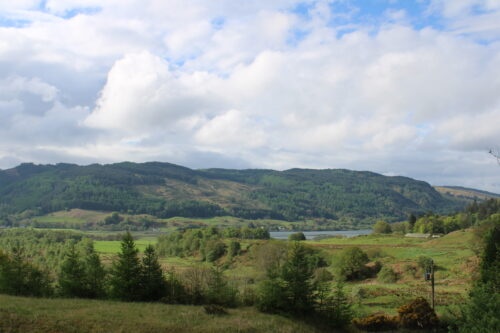
FAQs
1. What is being proposed for the woodlands in Balinoe?
This renewed Long-Term Forest Plan (LTFP) will cover the entirety of Balinoe Forest, circa 1,326 hectares (ha), with 1 hectare equivalent to a square measuring 100m x 100m. The forest was originally planted between 1979-1981 by the Forestry Commission and sold to the current owner in 2011. Of the 1,326ha there are around 942ha of commercial conifers, of which 362ha are due to be harvested in the next 10 years.
The plan will therefore set out proposals for felling and replanting of these areas, along with any works required to facilitate this, and any other works required to make the forest compliant with today’s standards.
2. How many trees will be planted?
Restocking will occur to achieve UKFS mandated stocking densities as prescribed through felling permission documentation issued by Scottish Forestry. These are 2,500 stems per ha for conifers after 5 years, and 1,600 stems per ha for broadleaves after 5 years.
3. What species mix? And why?
The minimum species composition of a forest is mandated by the UKFS. This details the minimum proportions for different species and areas of open ground within a forest area.
As a commercial forest, the owner is seeking to maximise the productive extent of the forest within the proportions as listed in UKFS on ground that can support a productive crop. On areas where commercial crops is not viable, opportunities for enhancing the biodiversity of the forest will be explored through the planting of native broadleaves and other mixed conifers.
4. What is the tree provenance?
All native broadleaves will be planted from the same or neighbouring provenance as directed in the UKFS.
5. How much carbon will be sequestered throughout the project?
As this plan currently does not incorporate any woodland creation, there will be no additional carbon sequestration associated with the ongoing sustainable management of the existing forest in Balinoe.
6. Will the timber haulage cause disruption?
Timber haulage will be directly onto the A road network and therefore shouldn’t be disruptive for neighbours. There is a short section of shared access at the A road junction, and this will be monitored through periods of haulage, and maintained or repaired if required, so as to minimise any disruption to the other road users.
7. Will there be public access?
Timber haulage will be directly onto the A road network and therefore shouldn’t be disruptive for neighbours. There is a short section of shared access at the A road junction, and this will be monitored through periods of haulage, and maintained or repaired if required, so as to minimise any disruption to the other road users.
8. Will there be habitat and species protection?
Yes. For known species and habitats, measures will be proposed to maintain, and where possible improve, habitats.
All operations will be preceded with the appropriate environmental checks to ensure that no work negatively impacts any previously unidentified habitats, species, archaeology, or watercourses.
Where possible, the biodiversity of the forest will be enhanced through the expansion of native broadleaf planting and the management of the existing mixed and native broadleaf blocks.
9. Why manage forests?
Woodlands improve the quality of our environment:
- Wooded catchments help protect the quality of our drinking water supplies and can reduce the impact of flood events.
- Trees capture harmful pollutants in our atmosphere and improve our air quality.
- Tree canopies provide shade, shelter, and absorb sound. Soils, animals, and humans can be protected from the extremes that our weather and climate can throw at us.
- Woodlands help to stabilise soils, reducing erosion and slips. They can protect against pollution by providing a buffer between source and receptor and help the recovery of any contaminated land. Woodlands offer a rich habitat for a range of species including critical pollinators, birdlife, animals, and plants.
By sustainably managing forests we can generate a sustainable timber supply while also ensuring that areas important for biodiversity and amenity are preserved. All forests and woodlands provide beneficial services including amenity, biodiversity. clean air, and clean water, and through management that is compliant to UKFS and UKWAS we will be able to maintain a balance between all these forest benefits.
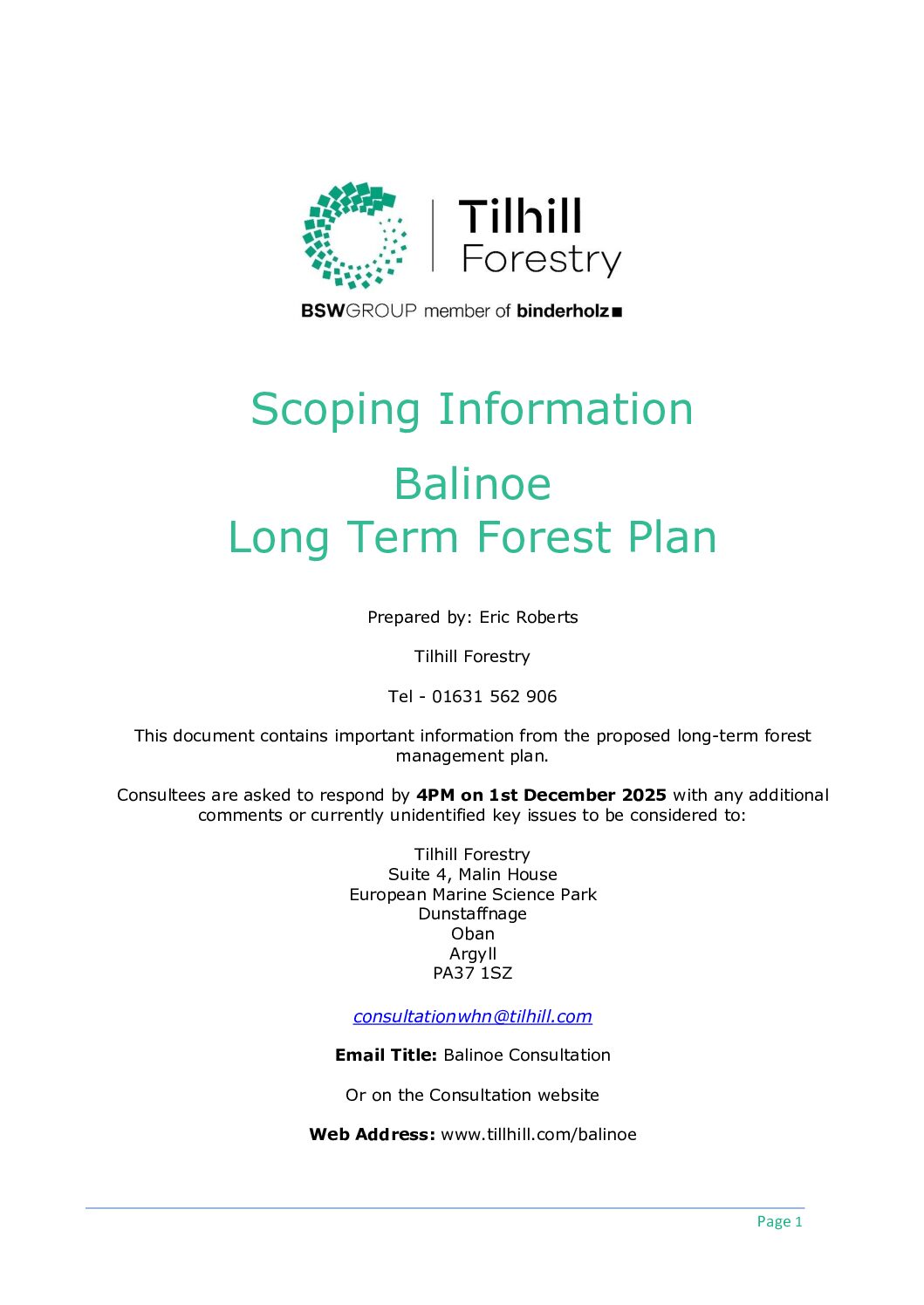
Balinoe Scoping Information
ViewWe want to hear from you
Please take part in the initial consultation survey below.




